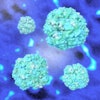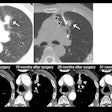
Patients from low-income countries are more vulnerable to delayed cancer diagnoses -- in part due to the fact that it can take 1.5 to 4 times longer than their high-income counterparts for them to seek care, a report published October 20 in PLOS Medicine has found.
The study reveals the scope of variations in early cancer diagnosis and treatment around the world and highlights how they can negatively affect patients, noted a group led by Dr. Dafina Petrova of the Biosanitary Research Institute of Granada in Spain.
"Common barriers to early diagnosis and care such as poor health literacy, cancer stigma, lack of access to diagnostic tests and treatment services, and financial, geographical, or logistical barriers are likely to be exacerbated in lower-income contexts, contributing to longer intervals on the cancer care pathway and worse patient outcomes," the team wrote.
It's crucial for people with cancer to receive timely diagnoses and treatment, but there are variations in how long it takes for a person to receive a cancer diagnosis and begin treatment depending on where an individual lives and the type of cancer that is presenting.
To better understand this discrepancy, Petrova and colleagues analyzed 410 articles published between 2009 and 2022 that represented more than 5.5 million patients from 68 nations. The team assessed three different intervals: time from the patient's first symptoms to a doctor visit, time from that first visit to diagnosis, and time from diagnosis to start of treatment.
A country's economic status was determined by its gross national income, or GNI (a low-income country was defined as one having a GNI of less than $1,045 U.S. per person) and the Human Development Index (scored on a scale of zero to 1, with very high human development between 0.8 to 1; high human development between 0.7 to 0.79; medium human development between 0.55 and 0.7; and low human development below 0.55).
The authors found that intervals from symptom onset to physician consultation in lower-income countries were 1.5 to four times longer than those for patients in high-income countries, varying between one and four months.
There weren't enough data to isolate diagnostic intervals between low- and high-income nations -- apart from a few studies that referenced breast cancer (53 days compared with 21 days) -- so the team compared averaged results, finding that the longest diagnostic intervals ranged from 57 to 83 days, depending on the type of cancer. The group encountered the same situation when it came to treatment intervals, and again compared averaged results, finding a range of 46 to 75 days depending on the type of cancer.
The investigators hope their research will help healthcare providers develop strategies to make cancer diagnosis and treatment more effective for poorer patients.
"[Our] results can be useful to set research priorities and identify areas most in need of interventions to strengthen early diagnosis and timely treatment ... and highlight the global disparities in timely diagnosis and treatment," they concluded.




















